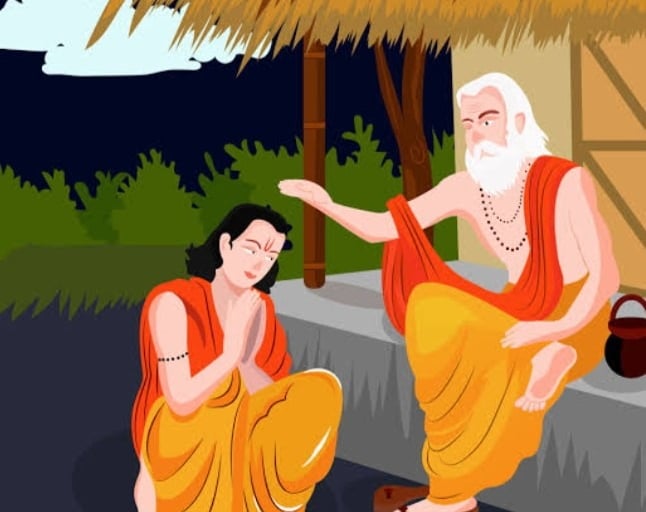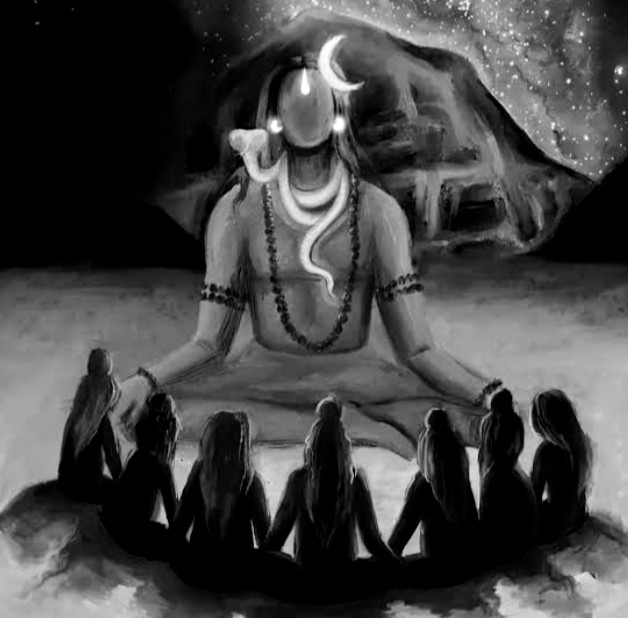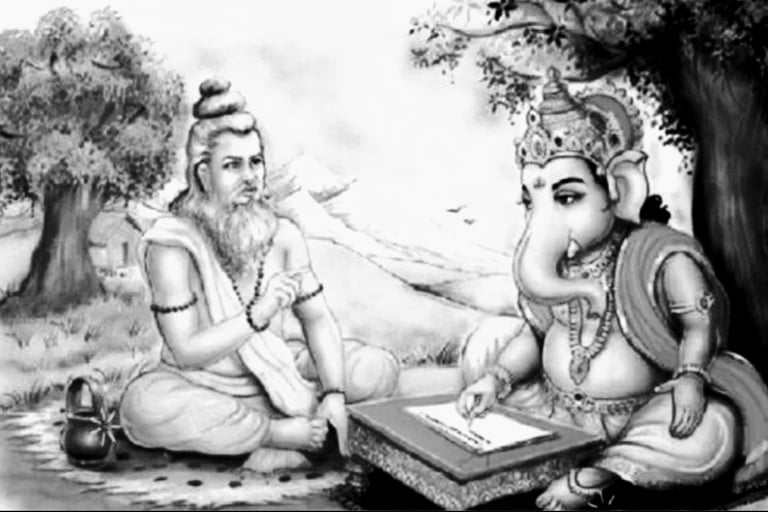Guru Purnima: In Gratitude to the Light That Never Fades
Under the soft light of Guru Purnima, we pause to remember the voices that showed us the way, the hands that held us up, and the silent grace that still walks with us. May this day remind us that the Guru’s true light isn’t bound by shape or time; it quietly shines within every heart that longs to learn.
CULTUROSCOPE
GuruBrahma, Guru Vishnu,
GuruDevo Maheshwara;
GuruSakshat Param Brahma,
TasmaiShri Gurave Namah.
Across every age and tradition, the bond between Guru and disciple has been cherished as sacred. It is more than a relationship; it is a luminous stream of light flowing from soul to soul. In the words of the Guru lies inspiration, for a true Guru does not merely impart knowledge; they awaken and illumine the very heart. Through the Guru’s blessings, a new radiance dawns in the disciple’s life. And so, through the centuries, this sacred connection has been honoured and celebrated.
In India, this day is observed on the full moon of the month of Ashadha, known as Guru Purnima. It is a day of devotion, gratitude, and tender surrender, a tribute not only to the teachers who have guided us but also an offering to the timeless, eternal presence of the Guru, who dispels darkness and brings the light of wisdom into our lives.
In Nepal, the hill nation at the foothills of the Himalayas, this day is celebrated as Teachers’ Day, when students honour the beloved teachers who shape their minds and nurture their values. Alongside India, Bhutan and spiritual communities across the world also observe this day with quiet reverence, devotion, and traditional rituals.
But how did it all begin? Who was the first guru? How did the guru-shishya parampara (the teacher-disciple tradition) come to illuminate the spiritual legacy of the subcontinent?
Let us step into the stream of story, silence, and sacred lineage —


Long before scriptures were written or mantras were chanted, there was silence. And in that silence sat Shiva, atop the snow-veiled summit of Mount Kailash. His eyes were closed, his body motionless, yet his presence vibrated with the energy of the infinite. He was not giving sermons. He was the teaching. He is known as the Adi Yogi, the first yogi, and the Adi Guru, the first guru. His silence was not absence, but the fullness of pure awareness.
Drawn by that luminous, silent presence, seven sages — Atri, Bharadvaja, Gautama, Jamadagni, Kashyapa, Vasishtha, and Vishwamitra gathered before Mahadeva. They are remembered as the Saptarishi, the seven seers reflected in the stars of the sky. These sages never asked a question, nor made any demand. Year after year, they simply sat before Shiva, following him in stillness and silently absorbing his boundless energy and wisdom.
Moved by their deep devotion, one day, Shiva slowly opened his eyes. In the unwavering gaze of these sages, he saw a reflection of his own silent stillness. That day was the full moon of Ashadha, a day radiant with quiet promise. And so, with hope in his heart, Shiva began to teach not through commandments, but by transmitting the seeds of 108 paths of yogic knowledge, trusting that this wisdom would one day flow outward and transform the world. In that sacred moment, the great yogi Shiva became the Adi Guru, the first teacher, and the ancient ‘Guru-Shishya Parampara’ (Guru–disciple tradition) was born.


The first Guru and the seven sages
The word Guru comes from Sanskrit:
Gu means darkness (ignorance)
Ru means remover
Thus, Guru is the one who removes darkness. More than a mere guide, the Guru stands as a living bridge between knowledge and ignorance, a silent link between our questions and the quest for truth.
Centuries after Shiva’s silent inspiration, countless hymns, mantras, and verses arose, preserved in the intellect and memory of the sages, yet passed down only through the spoken word. Over time, the scholarly world grew concerned. Faced with the vastness and scattered nature of this oral knowledge — its breadth, depth, and fragility they felt an urgent need to gather, structure, and preserve it in an enduring form.
In answer to that call, a child was born on a tranquil island in the Yamuna. His skin was dusky like the raincloud, so they named him Krishna. Born on a dvīpa, an island, he came to be known as Dvaipayana, the island-born. Thus, he became Krishna Dvaipayana.
As he grew, so did the expanse of his wisdom. He shone with a clarity and depth of understanding rare even among sages. In time, he gathered the scattered pearls of oral tradition, arranged them in order, and gave them a new, lasting form. And so, he came to be known as Vyasa, the one who classifies, divides, and preserves knowledge. He divided the vast, formless ocean of the Vedas into four distinct streams to protect and transmit them, giving the timeless oral wisdom its first written form. For this great task, he became revered as Ved Vyasa. And thus, Ved Vyasa lives on among us as the eternal compiler of sacred knowledge, the keeper of memory, and the architect of India’s spiritual heritage.
Born to Satyavati and the sage Parashara, Ved Vyasa was more than a compiler — he was a visionary thinker. Beyond skilfully dividing and arranging the four Vedas, he composed the Mahabharata, the longest epic in the world, authored the Brahma Sutras, and contributed to the Upanishads, which became the philosophical foundation of Vedanta. He also wrote the Bhagavata Purana, where devotion, love, and the divine play of Krishna are sung in timeless verses.
But Ved Vyasa was not only a great scholar; in the truest sense, he was a Guru. To carry forward the vast knowledge he had gathered, he entrusted it to four worthy disciples. They were —
Paila (Rigveda)
Vaishampayana (Yajurveda)
Jaimini (Samaveda)
Sumantu (Atharvaveda)
To Suta, he entrusted the task of preserving the Puranas. His own son, Shuka, was also a sage of rare wisdom and insight. It was Shuka who recited the Bhagavata Purana to King Parikshit in the seven days before the king’s death.
In Hindu tradition, Vyasa is honoured as the first and eternal Guru, and his birth anniversary is celebrated as Guru Purnima, also known as Vyasa Purnima. The traditional rituals of Guru Purnima begin with padapuja, the ceremonial washing of the Guru’s feet. This act is not merely a ritual; it is an offering of gratitude and surrender by the disciple, who walks the path shown by the Guru. Afterwards, the sanctified water, charanamrit, is distributed among the devotees. They receive it with devotion, as it is believed to carry the blessings of the Guru.
When Vyasa set out to compose the Mahabharata, he chose Ganesha — the son of Goddess Parvati and Lord Shiva, to be his scribe. Ganesha agreed, but on one condition that Vyasa must recite without pause. In return, Vyasa requested that Ganesha write each verse only after fully understanding its meaning. And so, through this profound exchange of wisdom and patience, an unparalleled epic was born. Even today, on this special day, Ganesha is also worshipped as the remover of obstacles and the lord of knowledge.


Vyasa spoke, Ganesha inscribed and legend became scripture
Far from the Vedic world, on another Ashadha Purnima, Gautama Buddha too gathered his first assembly of seekers at Sarnath and shared his divine insight. On that day, he publicly revealed the Four Noble Truths and the Middle Path for the very first time. His five former companions — Kondanna, Bhaddiya, Vappa, Mahanama, and Assaji sat in deep attention, listening to his words. Enchanted by his wisdom, they accepted him as their teacher and thus became his first disciples.
Thus began the Buddhist Sangha, the community of seekers. For Buddhists, Guru Purnima commemorates this first turning of the Dharma Wheel. In monasteries across India, Nepal, and Bhutan, monks chant sutras, offer lamps, and honour the Buddha not just as a teacher, but as the awakened one who shared the path.
In the Jain tradition too, Guru Purnima holds deep significance. This day is observed to honour Gautam Swami, the foremost disciple of Lord Mahavira. Once, Gautam Swami was known for his pride, the pride of great scholarship. Yet, in the calm and gentle presence of Mahavira, his ego melted away. Accepting Mahavira as his teacher, he transformed into a humble seeker of truth, choosing the path of simplicity and surrender over pride and intellect. Thus, Gautam Swami became Mahavira’s first ganadhara, chief disciple and spiritual companion. Jains observe this day with introspection, fasting, and deep meditative silence, reflecting the path of humility and inner transformation.
Guru Purnima also marks the beginning of Chaturmasya, the four holy months of the monsoon. For wandering monks and sages, it is a time to stay in one place, offer teachings, and engage in intense spiritual practice. For householders, it’s a time of restraint, discipline, and study. In many traditions, seekers take vows of silence, austerity, or devotion, renewing their inner lives.
From Shiva’s silent stillness to Vyasa’s sacred verses, from the Buddha’s turning of the Dharma Wheel to Mahavira’s path of austere discipline, the Guru has appeared in many forms. Yet the purpose has always been the same — to kindle the inner lamp and share the light of wisdom. That is why Guru Purnima is not merely a festival; it is a day of heartfelt surrender and gratitude. A day to bow with devotion at the feet of our teachers.
Let us all offer our humble salutations not only to the Gurus who have guided us, but also to our first Gurus, our parents, whose love and sacrifice first showed us the way.
नमो गुरुभ्यः
Salutations to all Gurus.
Subhalakshmi Buragohain
